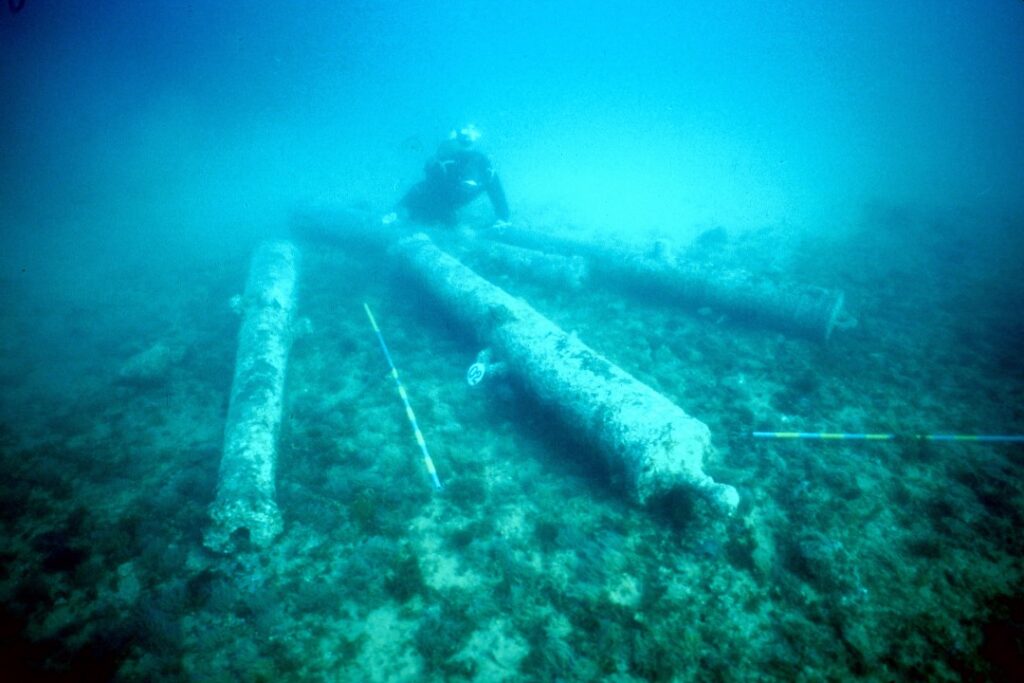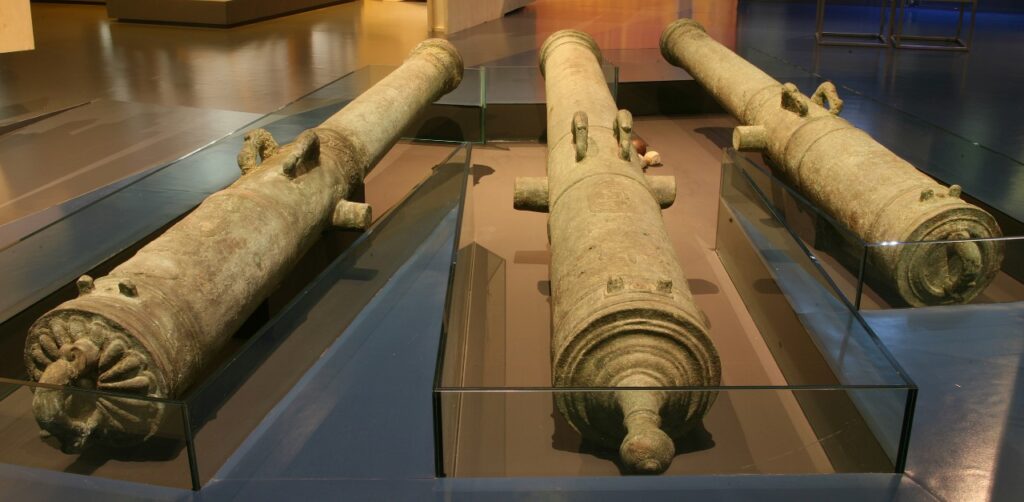The 10 cannons of Arade, from an underwater archaeological collection, carried out at Ponta do Altar, in front of Ferragudo (Lagoa) were today classified as a set of national interest, with the designation of "national treasure", during the Council of Ministers dedicated to Culture .
The classification as “National Treasure” had already been approved by the Section of Museums, Conservation and Restoration and Cultural Heritage (SMUCRI) of the National Council of Culture, and published in Diário da República last March 10th.
Three of these ten fire hydrants from the 1993th century are on display in the permanent exhibition at the Museu de Portimão, coming from the underwater archaeological collection carried out between 2006 and XNUMX at the mouth of the river Arade, near Ponta do Altar.
The other seven specimens are being treated and deposited at the National Center for Underwater Archeology of the Directorate-General for Cultural Heritage, in Lisbon.
These ten “bastard colubrinas” are associated with the context of the sinking of a ship, possibly in the service of the Spanish crown, which would have occurred during the period of the Iberian Union, between 1580 and 1640.
Although found in a scattered way, the ten cannons are considered to be among the most significant artillery collections of the XNUMXth century, representing an important testimony of the transoceanic navigation of the time and the passage along the Portuguese coast of the connection routes between Spain and its overseas territories.
The cannons, almost three meters long, were discovered by amateur divers in 1992, near Ponta do Altar, in front of the mouth of the Arade, but already in the municipality of Lagoa.
The underwater archaeologist Francisco Alves, who in the 2000s would direct successive systematic campaigns of underwater research in the Arade estuary, wrote in an article entitled «Archeology of a shipwreck in the Algarve at the beginning of the century. XVII" published in the specialized magazine "O Arqueólogo Português", that "regardless of the fact that it is a singular and exemplary case, both from a scientific-patrimonial and civic point of view, the set of fire hydrants of Ponta do Altar B came to provide a remarkable contribution to the knowledge of artillery from the period of Filipino rule in Portugal».
The Algarve now has three «National Treasures»: the cannons of the Arade-Ponta do Altar River, in the Portimão Museum, the roman mosaic of the ocean god, in the Museum of Faro, and the Minutes of the Council of Loulé from the XNUMXth and XNUMXth centuries, from the Loulé Archive.
The same decree approved by the Council of Ministers this Thursday, April 22, also classified as a set of national interest other nautical and underwater archaeological movable assets, which were also given the designation of "national treasure": the three astrolabes from underwater archaeological collection carried out in São Julião da Barra and also the six monoxillary canoes from an underwater archaeological collection carried out on the Lima River, in Viana do Castelo.
Also as "national treasure" were classified various movable assets land: the votive slab in the Portuguese language from Monte do Coelho, in Arronches, identified in 1997, the marble plaque with a sculptural representation of the Virgin and Child, attributed to Gregorio di Lorenzo, Italy, XNUMXth century, incorporated into the Parques de Sintra-Monte da Lua, the XNUMXth century sapi-Portuguese Píxide belonging to the private collection, cylindrical box, decorated with six scenes from the life of the Virgin, from a late Gothic repertoire, in bas-relief, the skeleton of the Criança do Lapedo and the associated archaeological artefacts, in deposit at the National Archeology Museum, dating from the Upper Paleolithic, and also the twenty-nine decorated stelae from Cabeço da Mina in Vila Flor, dating from the Chalcolithic/Bronze Age period.





















Comments